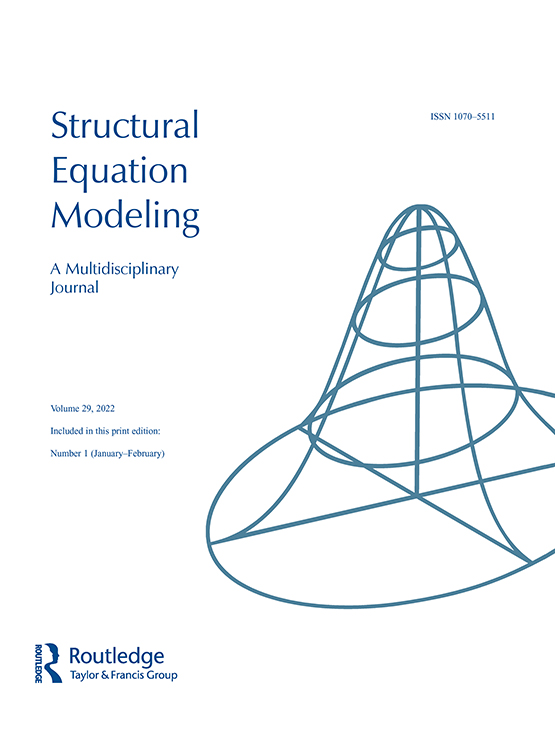追求稀疏性:正则化结构方程模型的精确解和近似解
IF 3.2
2区 心理学
Q2 MATHEMATICS, INTERDISCIPLINARY APPLICATIONS
Structural Equation Modeling: A Multidisciplinary Journal
Pub Date : 2023-05-11
DOI:10.1080/10705511.2023.2189070
引用次数: 3
摘要
正则化结构方程模型在社会科学领域得到了广泛的关注。他们承诺通过关注样本外预测和稀疏性来减少过拟合。为此,对数据拟合了一组约束越来越严格的模型。随后,通常通过信息标准选择其中一个模型。正则化结构方程模型的当前实现在优化器方面有所不同:一些使用通用优化器,而另一些使用专门的优化例程。虽然这两种方法通常表现相似,但我们表明它们可以产生非常不同的结果。我们认为,特别是优化器和选择标准(例如,BIC)之间的相互作用有助于这些差异。我们用实证论证和模拟研究来证实我们的论点。基于这些发现,我们得出结论,研究人员应该尽可能考虑专门的优化器。为了方便实现这样的优化器,我们提供了R包lessSEM。本文章由计算机程序翻译,如有差异,请以英文原文为准。
Striving for Sparsity: On Exact and Approximate Solutions in Regularized Structural Equation Models
Abstract Regularized structural equation models have gained considerable traction in the social sciences. They promise to reduce overfitting by focusing on out-of-sample predictions and sparsity. To this end, a set of increasingly constrained models is fitted to the data. Subsequently, one of the models is selected, usually by means of information criteria. Current implementations of regularized structural equation models differ in their optimizers: Some use general purpose optimizers whereas others use specialized optimization routines. While both approaches often perform similarly, we show that they can produce very different results. We argue that in particular, the interaction between optimizer and selection criterion (e.g., BIC) contributes to these differences. We substantiate our arguments with an empirical demonstration and a simulation study. Based on these findings, we conclude that researchers should consider specialized optimizers whenever possible. To facilitate the implementation of such optimizers, we provide the R package lessSEM.
求助全文
通过发布文献求助,成功后即可免费获取论文全文。
去求助
来源期刊
CiteScore
8.70
自引率
11.70%
发文量
71
审稿时长
>12 weeks
期刊介绍:
Structural Equation Modeling: A Multidisciplinary Journal publishes refereed scholarly work from all academic disciplines interested in structural equation modeling. These disciplines include, but are not limited to, psychology, medicine, sociology, education, political science, economics, management, and business/marketing. Theoretical articles address new developments; applied articles deal with innovative structural equation modeling applications; the Teacher’s Corner provides instructional modules on aspects of structural equation modeling; book and software reviews examine new modeling information and techniques; and advertising alerts readers to new products. Comments on technical or substantive issues addressed in articles or reviews published in the journal are encouraged; comments are reviewed, and authors of the original works are invited to respond.

 求助内容:
求助内容: 应助结果提醒方式:
应助结果提醒方式:


